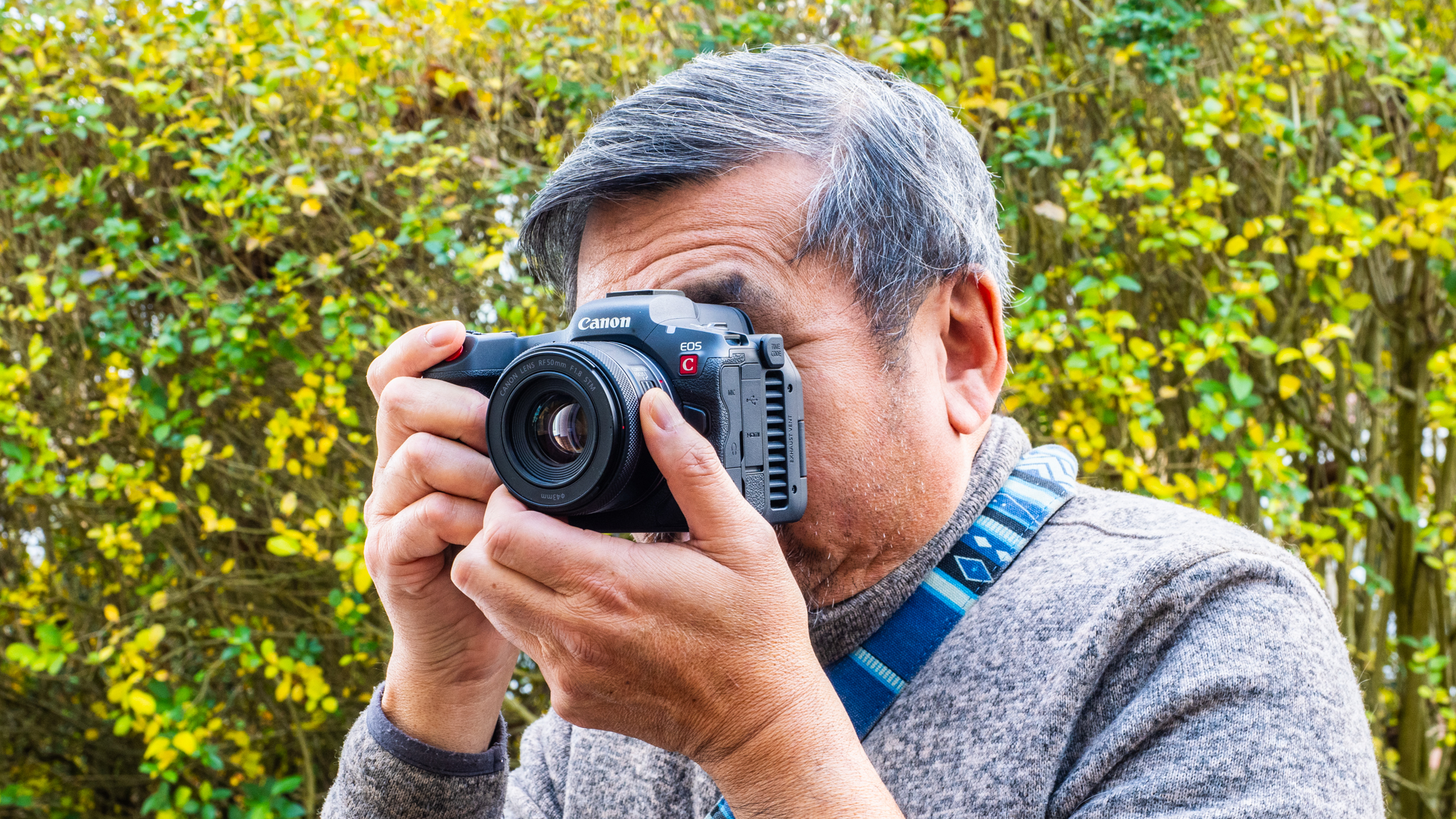
The Canon EOS R5 is a hugely popular and successful mirrorless full-frame that excels in both stills and video shooting. That said, excellent though the EOS R5 is, it’s fair to say that it is arguably better at still capturing than video where its tendency to over-heat compromised its appeal.
Using the Canon EOS R5 as a starting point, Canon has packed it with video features without compromising its stills skills, although it has lost its very effective five-axis in-body image stabilizer. The most obvious physical change is the body’s left side is much deeper to allow the space to install permanent cooling fan and vents which, in theory, means the camera has the ability to shoot 8K video until the battery dies or the media is full without any overheating issues.
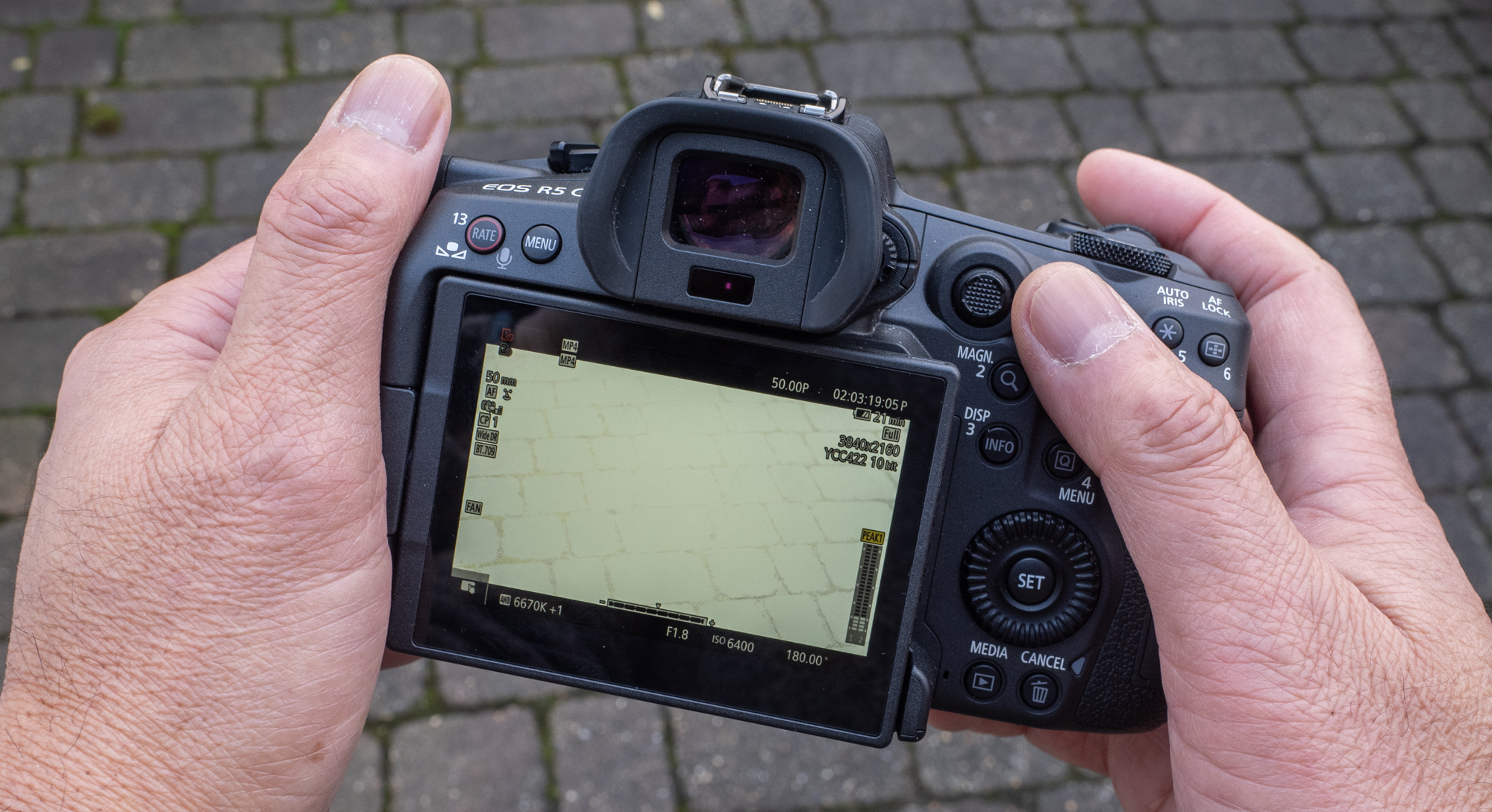
The EOS R5 C is the result, making it the smallest, most compact camera in Canon’s Cinema range, which includes the EOS C70 ($5,499 / £4459 body only) at the budget end of the range and the EOS C700 FF and C500 Mark II at the top end.
In effect, the EOS R5 C is two very powerful cameras in one. For stills, you can enjoy its 45-megapixel output, high ISO performance, exceptional AF skills, and the ability to shoot full-res Raws at 20fps with the electronic shutter.
Its headline video features include its ability to record 8K video at 30p (60p with a compatible external power supply) with three 12-bit Cinema Raw Light footage options internally but also MP4 for usable out-of-camera footage, XF-AVC with 10-bit 4:2:2 files and oversampled 4K at 120fps.
Being equipped with the EOS RF mount means the EOS R5 C can accept a growing collection of RF lenses and a massive range of EOS EF and Cinema lenses via an adapter.
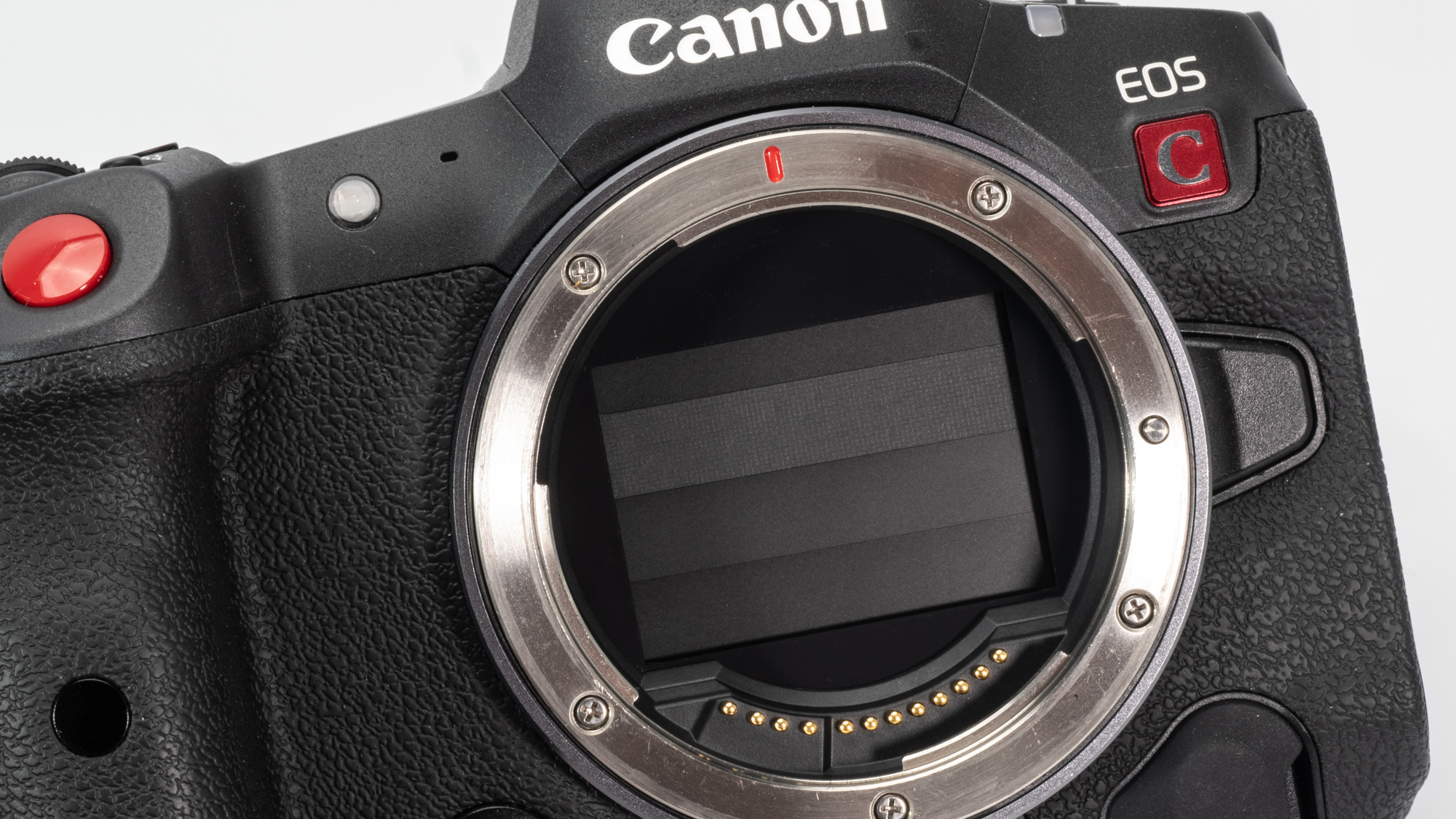
Although the EOS R5 C does not have IBIS it does have the same Advanced Five-axis Electronic IS found in the pro Cinema EOS cameras for stable, smooth hand-held footage and this facility is also available with non-stabilized Cinema lenses.
Finally, Canon released a firmware update (v1.0.61) in December 2023 with extra features including compatibility with RF Mount Cinema prime lenses and the recently introduced RF 24-105mm f/2.8.
Canon EOS R5 C: Specifications
Canon EOS R5 C: Design & Handling
Given the EOS R5 C’s design heritage, it’s no surprise that it handles very similarly to the EOS R5 especially the right side of the body. The magnesium alloy body itself has a robust, reassuring feel and it’s weather-sealed to a pro standard.
The contoured handgrip provides a secure and positive grip and quick access to all key controls. The three control dials are positive in use and there are no fewer than 13 assignable buttons, which means there is huge potential for setting up the EOS R5 C to your needs. In stills set-up, the number of customizable buttons drops to 12 with number 10 (the record button on the EOS R5) not having any function. It is a bit of a memory test recalling which button does what.
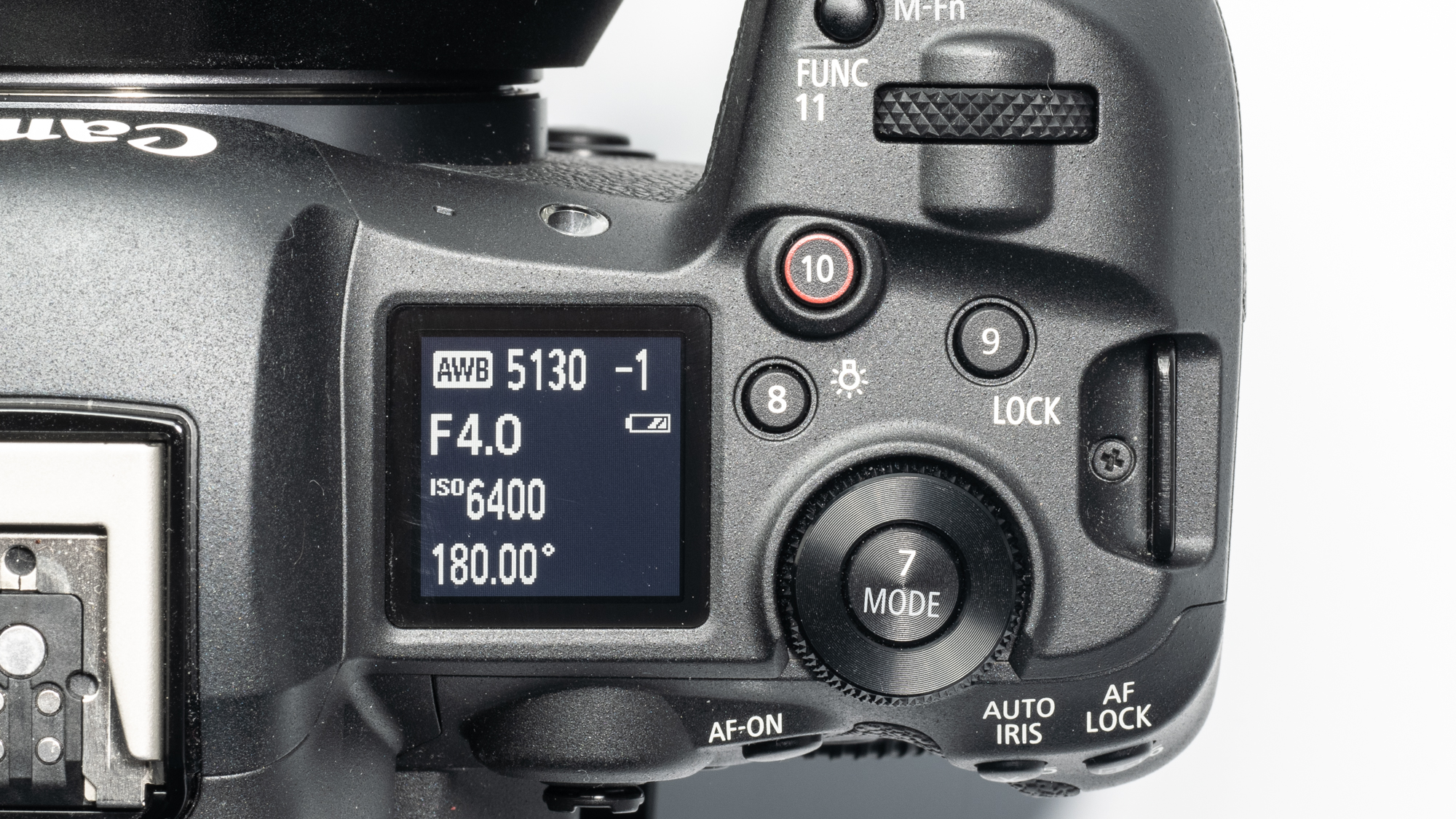
Continuing the tour to the left-side top plate, you can see that the EOS R5 C has a dedicated on/off switch with the option of photo and video. It is clearly marked but a better physical differentiation between the three positions would be a benefit. It was too easy to go straight from video to photo skipping the off position and I did this several times, so this needs watching if you don’t want to arrive on location with a drained battery. A more positive or lockable off setting might be better or greater travel between the three settings.

On the plus side, in Photo mode, the EOS R5 C’s menu and its contents are essentially identical to the EOS R5’s but when you switch over to video shooting, you get Canon’s Cinema EOS menu with its video-oriented workflow. A smaller font and many more options means you have to be a little more deliberate when using the video menu touchscreen, but at least with the two completely different interfaces that have been optimized for the two shooting modes there’s no chance of any confusion, so it makes sense.
The EOS R5 C’s cinematic menu is deep and complex to work through for content creators more familiar working with cameras that are more stills-focused. There are features not found on the EOS R5 including waveform, vectorscope monitors, and false colors.
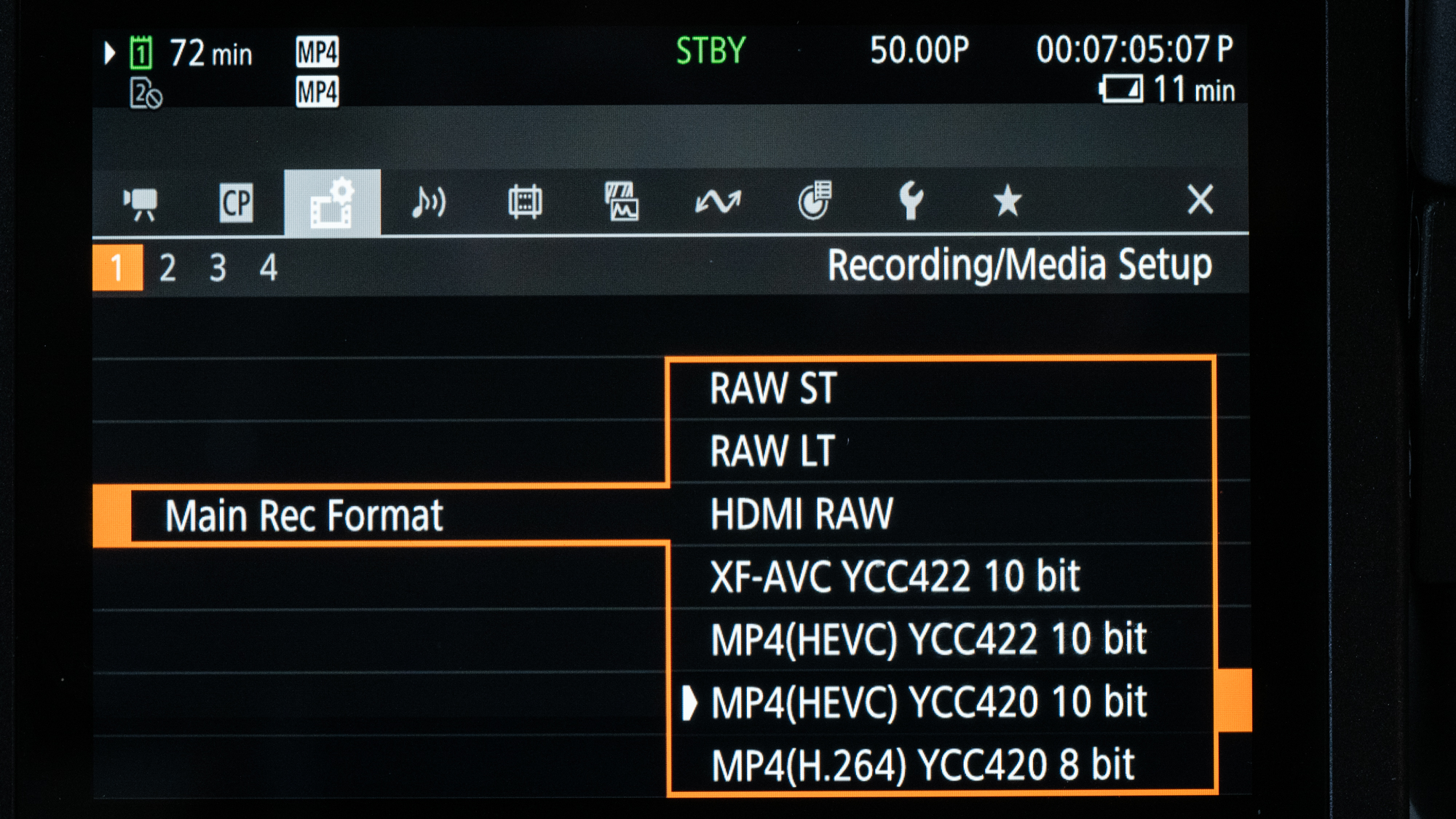
We’ve already mentioned that the EOS R5 C has a much deeper body on the left side. It’s not especially elegant but it’s there for a good reason and at least we haven’t lost the really useful 3.2in vari-angle touch monitor that swings out for easy viewing from many angles including from the front.
There are vents on both sides of the fan housing plinth and it seems air is drawn from the right vents and this takes any generated heat from the sensor and expels it through the left-side vents. When running, the fan is audible even at the low setting and it is much more obvious at the high or maximum settings. Fan levels can be set independently in standby and record modes. It did its job well in typical UK winter shooting conditions.
For internal recording, EOS R5 C has dual card slots, one for CFexpress Type B and the other for UHS-II SD. For this test, I stuck with CFexpress Type B cards, ProGrade Gold, and Sandisk Extreme.
Power is supplied by a single LP-E6 NH Lithium Ion battery. This provides sufficient energy to access most of the camera’s features, the exception being the ability to shoot 8K at 60p. For that, you need the optional CA-946 with the DR-E6C external power supply or a suitable power bank.
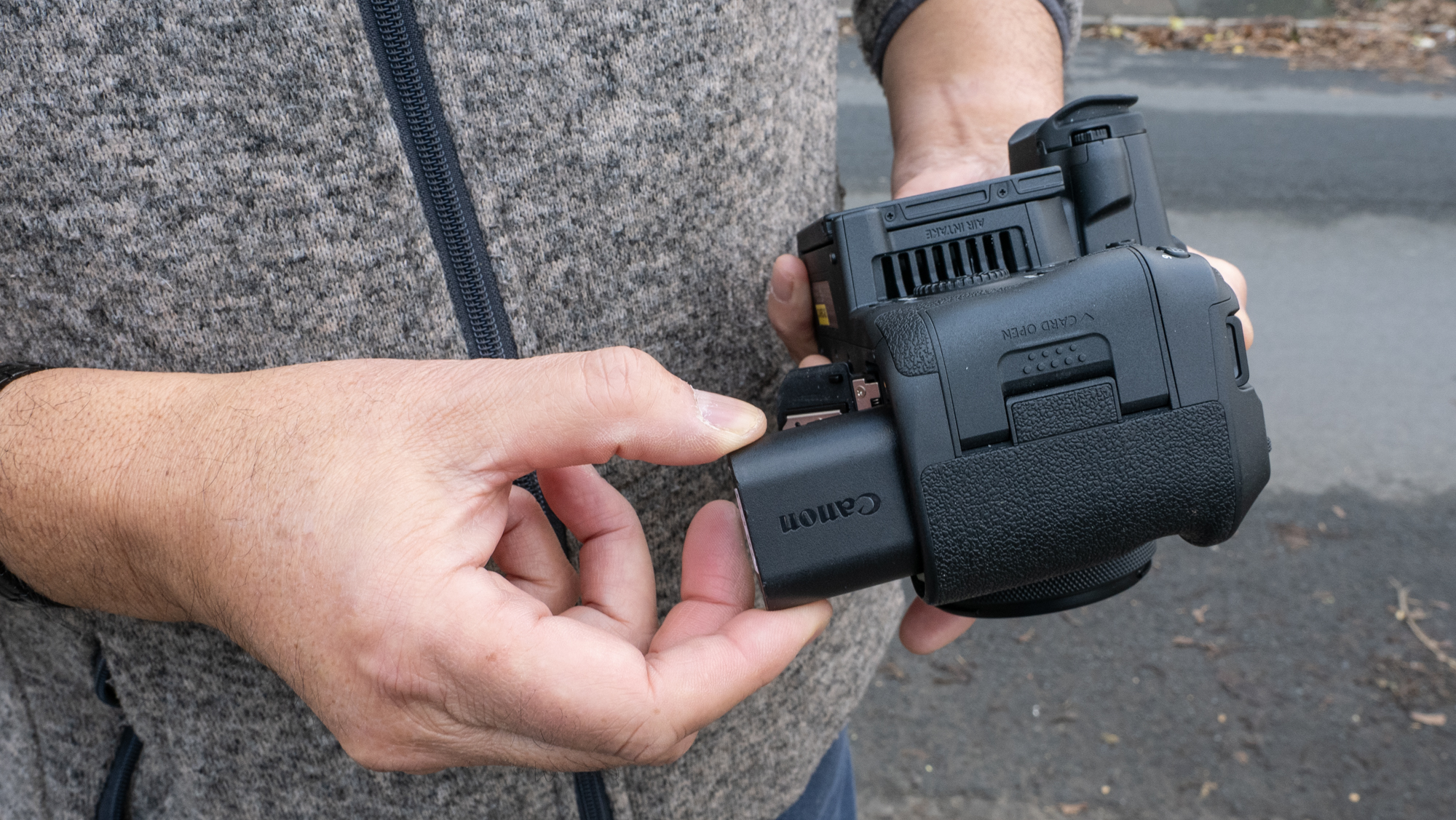
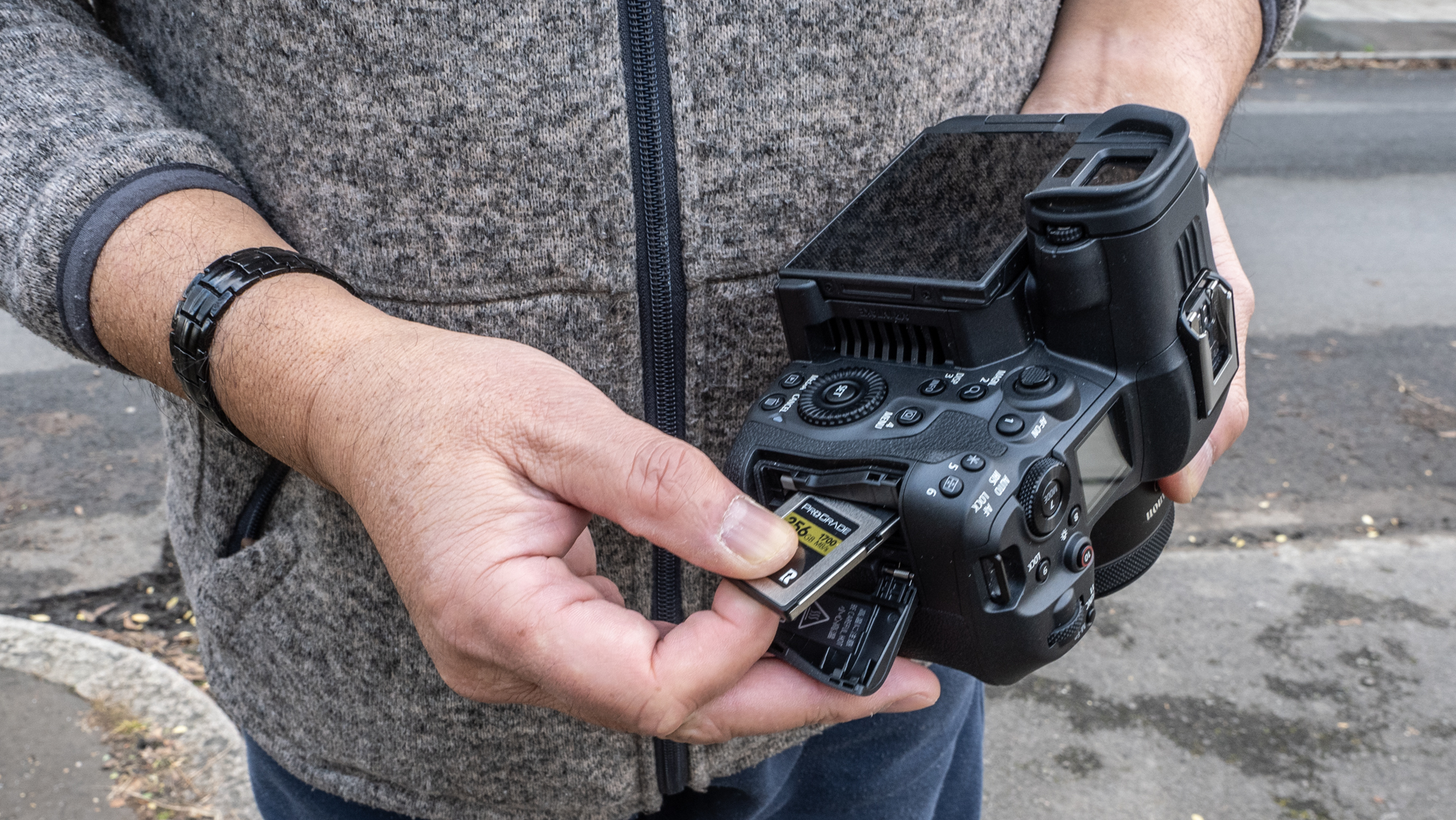
Canon EOS R5 C: Performance
For this test of the EOS R5 C, I used a selection of Canon RF prime and zooms including the RF 24-105mm f/4, 14-35mm f/4, and RF 50mm f1/8. I had also a Canon C N-E 50mm T1.3 L F lens to try on the EOS R5 C via a Canon EF to RF adaptor. The retail price of this lens is $3,950 / £3699. Canon announced a family of seven RF cinema primes last autumn and these are due reach to the shops early in 2024.
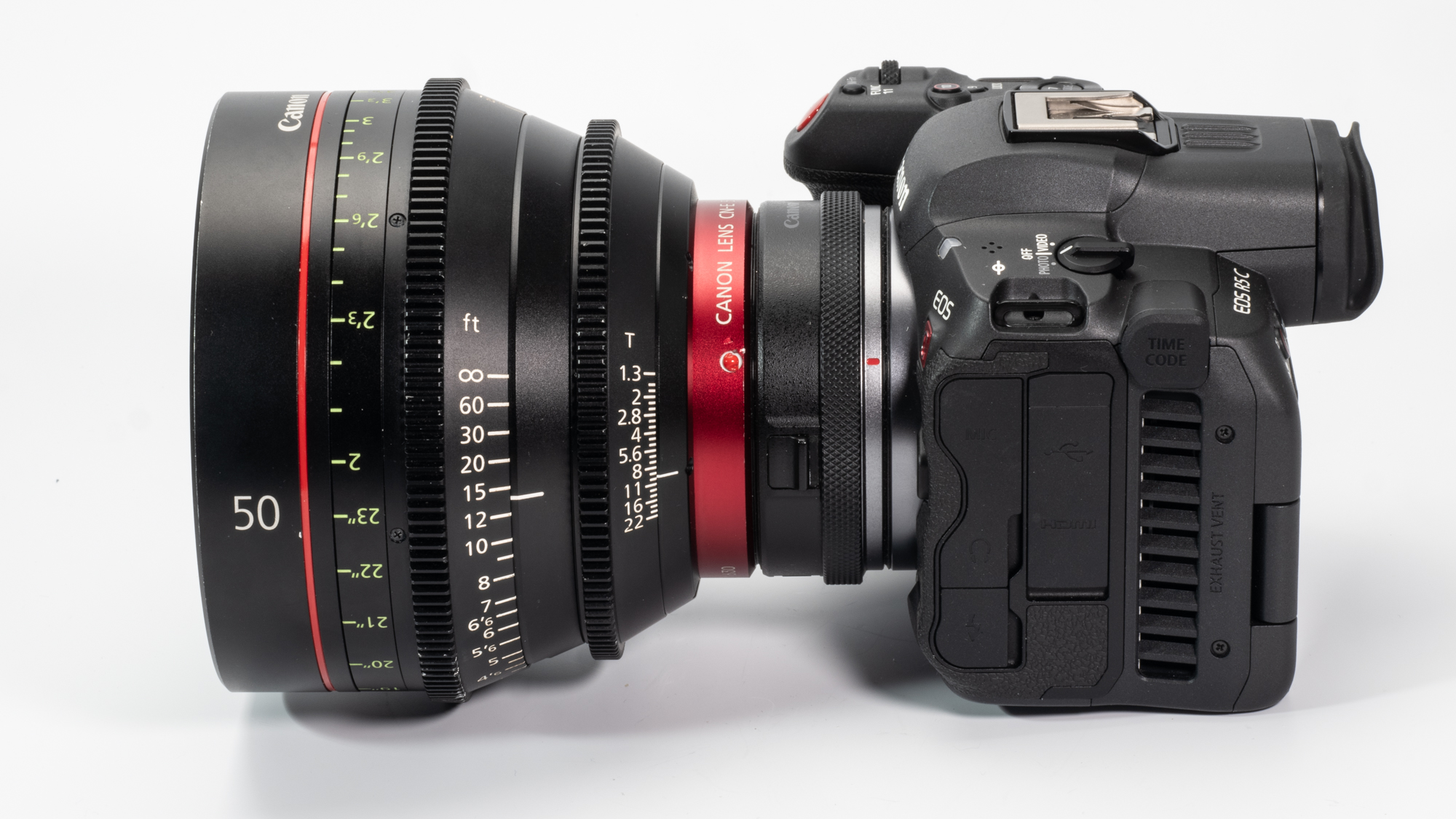
As you would expect the camera performed solidly producing fine-quality results. I thought not having IBIS would be an issue particularly when shooting stills but it wasn’t really. Most buyers of the EOS R5 C would probably have the camera on a gimbal or some other support, so it’s probably a non-issue anyway.
With IS-equipped RF lenses, the camera gives the option of Digital IS, and the two work together for steady shooting for those who want to use it.
Shooting 8K footage with the EOS R5 C loaded with a fully charged battery and at an ambient room temperature of around 18°C I got a recording time of 55min before the battery finally expired. However, battery capacity out on location when the temperature was around 8°C was less impressive I got about 30 minutes shooting time.
Shooting on location or an event such as a wedding, you’ll very likely need spares and an option to consider is to buy the BG-R10 Battery Grip (current street price is $349 / £379) that takes two LP-E6 NH cells.

In-body charging is possible via the camera’s USB-C port and if you have a suitable power bank it can run camera from it. I tried a Charmast 100W/20,000mAh PD power bank with a PD cable and the PD icon appearing on the LCD display and monitor showed that it worked fine. The freshly charged power bank kept the EOS R5 C running for three hours and was down to about 50% at the end.
During those three hours, I had the EOS R5 C filming in different modes on my desk with the fan in its auto setting and although the handgrip and base got rather warm, the camera didn’t shut down. It is worth noting that the ambient temperature of my home office was about 18°C so I can’t vouch for how the camera and fan would perform in warmer climates.
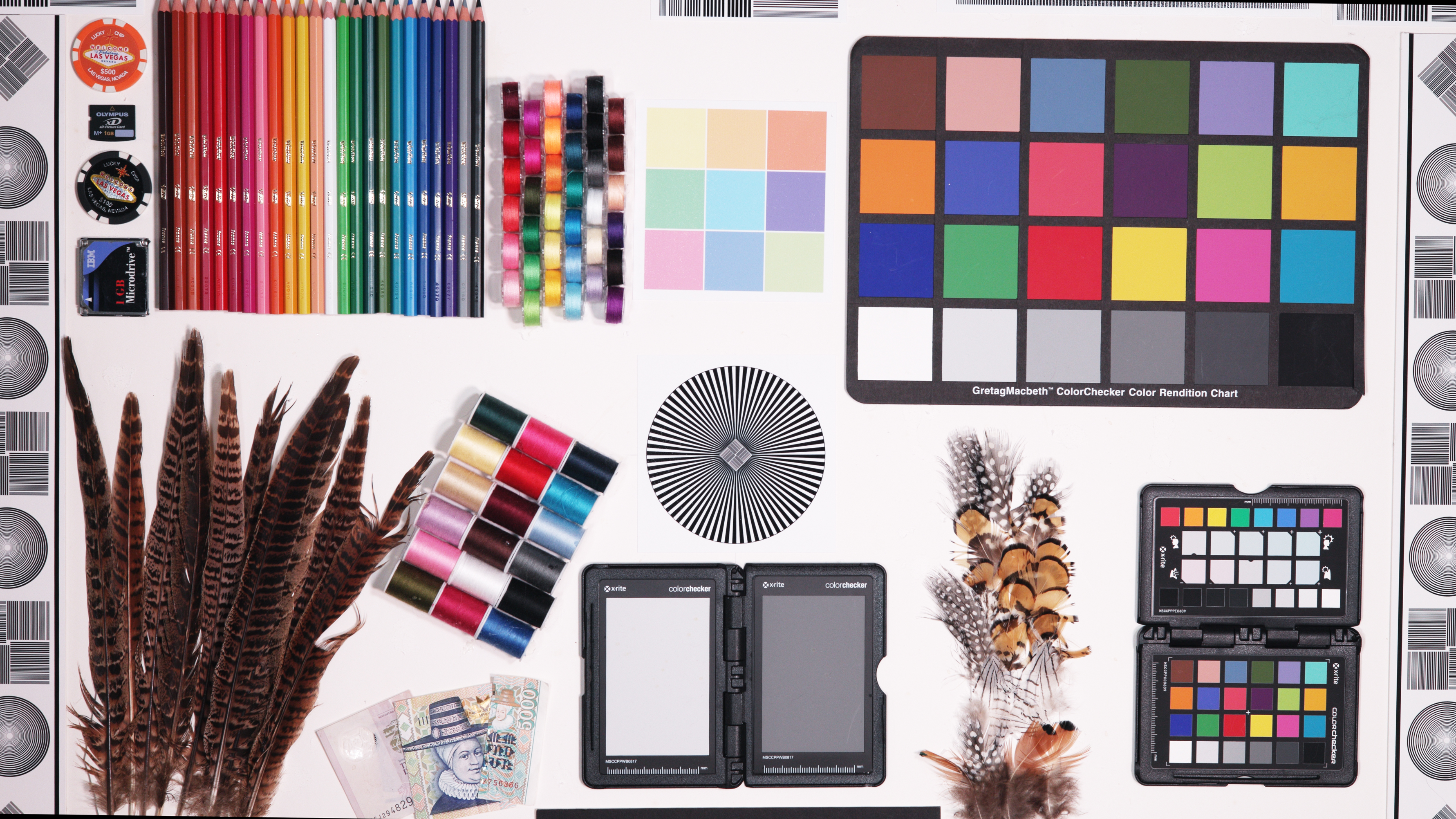
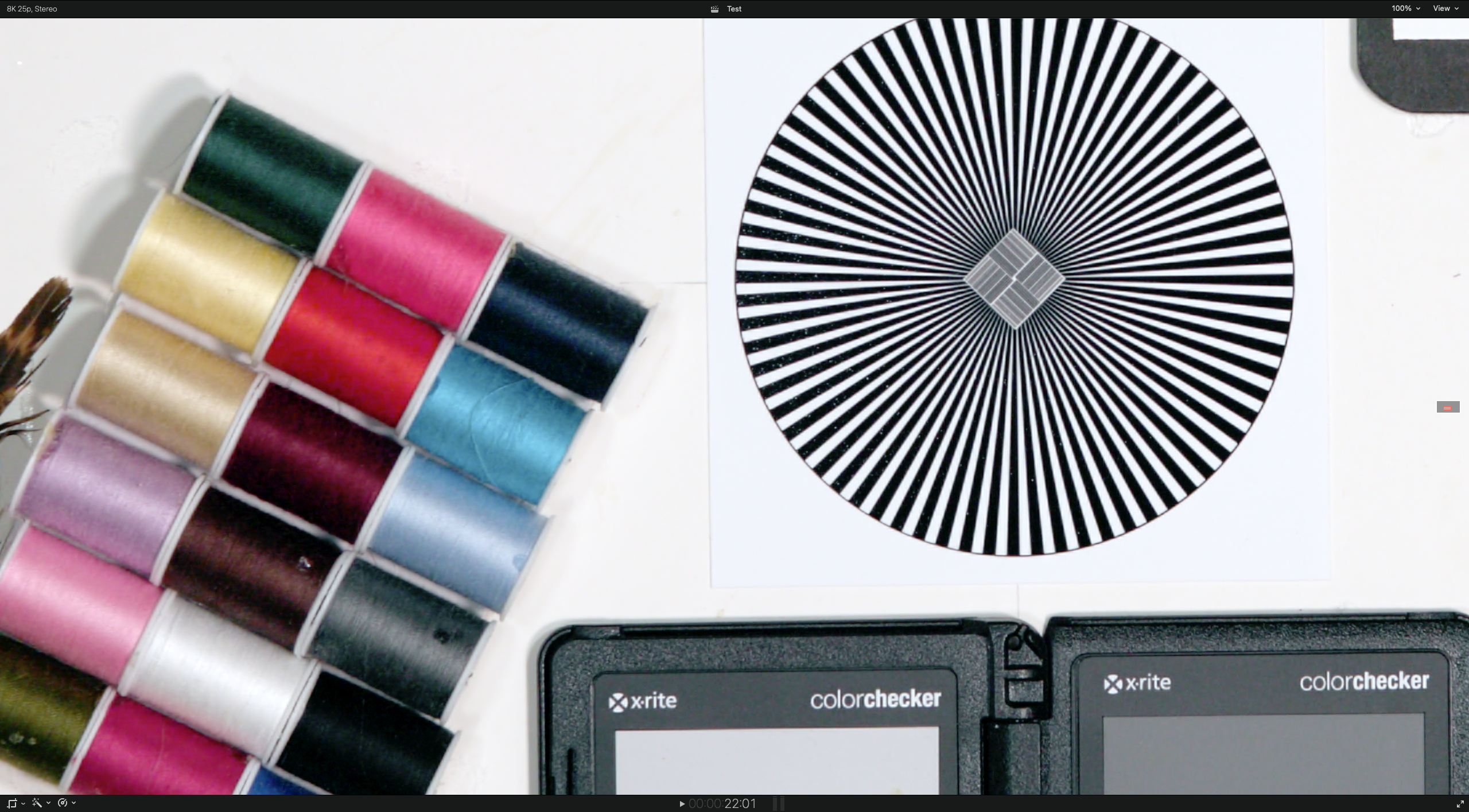
In terms of movie formats, resolutions, and frame rates, the EOS R5 C is blessed with a great selection. The EOS R5 C’s sensor obviously shares many of the attributes for the EOS R5 but there are key differences such as Dual Gain ISO at 800 and 3200 for C-Log 3 and there’s the option of audio with 4K/120p.
I shot MP4 and Raw format shooting in 4K and 8K with footage put through Final Cut Pro. In both file types, color reproduction looked spot on and whether you like a punchy or more natural look, the potential is there. With noise reduction and stabilization added during the edit the final results looked excellent.

The EOS R5 C’s autofocus worked well for both stills and video. There are many more AF options in stills shooting and the system has a wide choice of focus zones and subject-detect modes is the same as that found in the EOS R5. For video shooting the AF frame options are small, large, and whole frame and fine-tuning options include AF Speed that can be varied from +2 to -7 and a selection of human-based modes such as Face Detect & Tracking and Eye Detection which proved sensitive and tenacious as the subject walked at normal pace towards the camera position. Shooting indoors under typical domestic lighting was no problem either and AF was snappy and accurate.

Canon EOS R5 C: Verdict
The Canon EOS R5 C is a fine and capable camera that can deliver very effectively on two fronts, stills and video.
For the serious content creator and video professionals, there is no denying its appeal and it is a better investment than the EOS R5. Obviously, much depends on your aims and how you like to work. The EOS R5 has better battery life and IBIS and while overheating (which I have experienced even when shooting stills) is a potential pain, but it can be managed. On the other hand, the EOS R5 C has its integral fan and a huge range of movie features but it is a chunkier camera although it is just over 30 grams heavier.
Money-wise, on the street the EOS R5 C body costs £4149 while the EOS R5 is £3879 so the difference is just £270. The other option for serious content creators is the RF mount but smaller sensor EOS C70 which is currently around £4600 body only but this is a dedicated video camera. At this level of spend, that difference between the three cameras is unlikely to be a deciding factor so which one you go for depends on your needs. Go for the EOS R5 C body and you’re not going to be disappointed.
